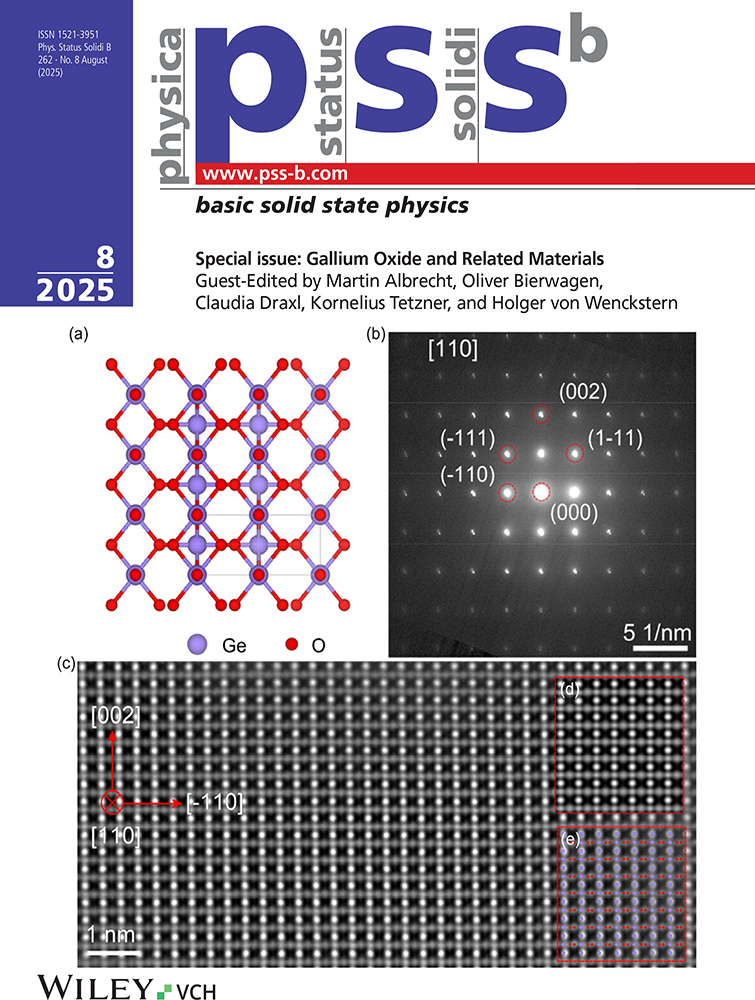Raman and Photoluminescence Spectroscopy of CdSe/BeTe-Interfaces
Abstract
We present an analysis of CdSe monolayers (MLs), embedded in BeTe, by Raman spectroscopy and photoluminescence. Via the MBE growth process we attempt to create intentionally interfacial bond configurations (Cd–Te or Be–Se) at the lower and upper interfaces of the CdSe MLs, respectively. Raman selection rules of phonon signatures of the CdSe MLs as well as polarisation dependent photoluminescence reflect the asymmetry of the lower and upper interface terminations. We found that Cd-Te or Be–Se bonds can be intentionally created at the lower interface, while the upper interface shows always predominantly Be–Se bonds. The Raman phonon signature is explained quantitatively by a linear chain model, assuming a mixture of areas of 1 and 2 ML thickness.




